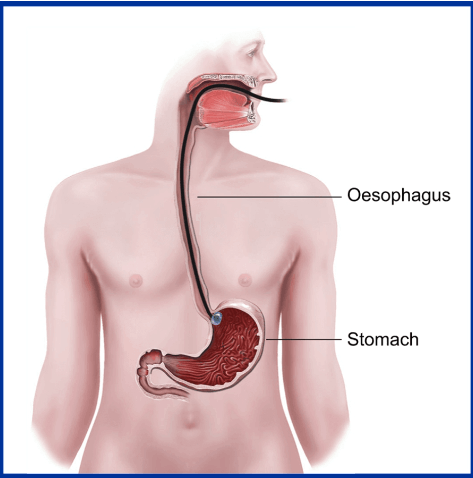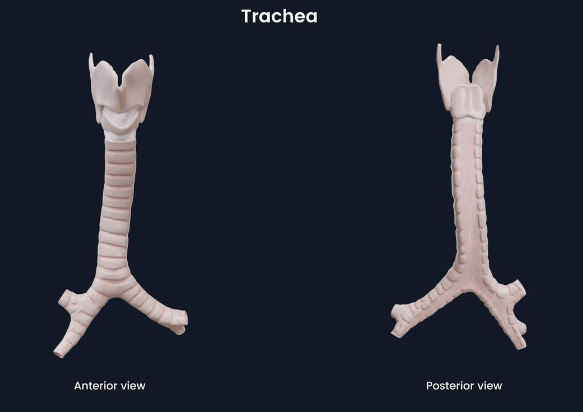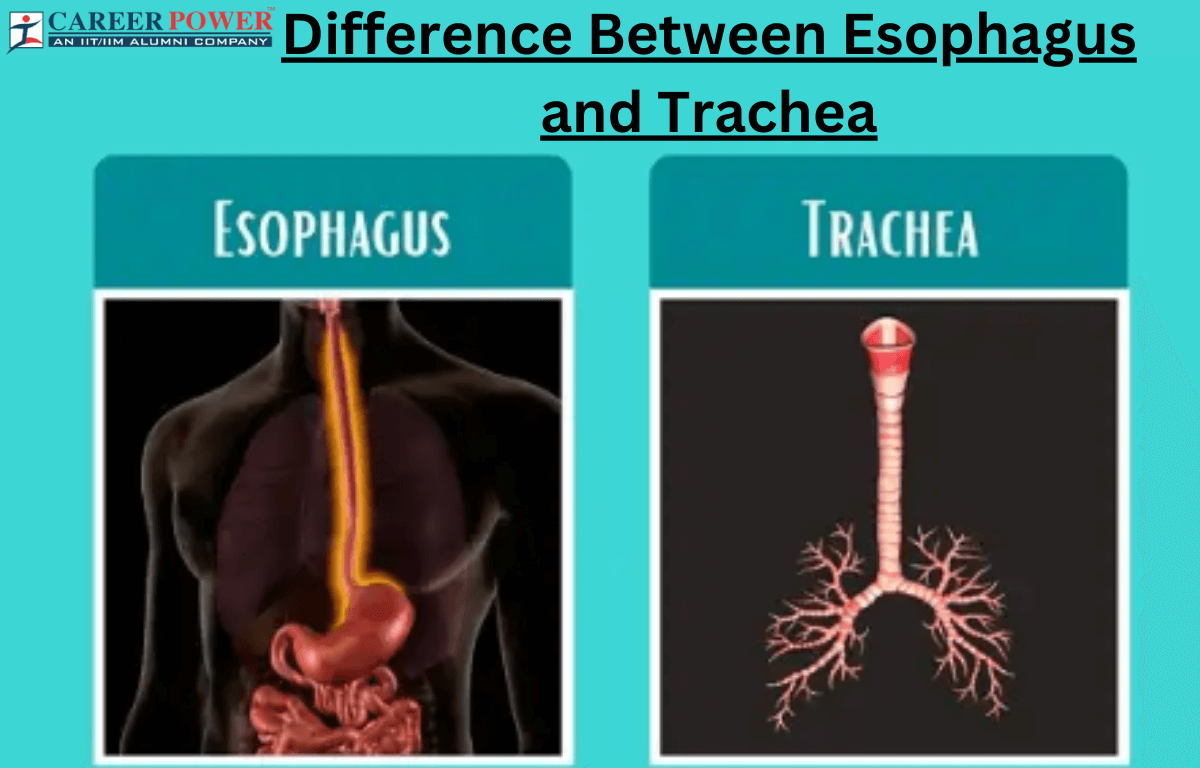As we all know, there are two important pipes or tubes present in the human body: the Esophagus and the Trachea. The esophagus is the muscular tube that connects the throat or pharynx to the stomach. Its main function is the transportation of food and liquids from the mouth to the stomach. On the other hand, the trachea connects the larynx or voice box to the bronchi of the lungs. It provides a pathway for the exchange of air during respiration. Both the digestion and respiration are very important topics in biology.
What are Esophagus and Trachea?
The esophagus and trachea are two distinct parts of the human anatomy. These two structures are part of the respiratory and digestive systems, respectively, and play crucial roles in the processes of breathing and swallowing.
1. Esophagus
The esophagus is a muscular tube that connects the throat (pharynx) to the stomach. The primary function of the esophagus is to transport food and liquids from the mouth to the stomach for digestion. The esophagus has a muscular wall that propels the ingested material through a coordinated contraction and relaxation process called peristalsis.

2. Trachea
The trachea, commonly known as the windpipe, is a vital part of the respiratory system. The trachea is a flexible tube-like structure that extends from the larynx (voice box) down to the bronchial tubes in the lungs. It plays a crucial role in breathing, allowing air to pass into and out of the lungs. The trachea is lined with ciliated cells and is supported by rings of cartilage to keep it open and protected.

Difference Between Esophagus and Trachea
The esophagus is part of the digestive system and is responsible for transporting food to the stomach, while the trachea is part of the respiratory system and facilitates the flow of air to and from the lungs. Their distinct functions, locations, and structures make the esophagus and the trachea essential components of different bodily systems. Here we have tabulated some differences between the esophagus and the trachea.
| Difference Between Esophagus and Trachea | ||
| Aspects | Esophagus | Trachea |
| Functions | The esophagus transports food and liquids for digestion. | The trachea facilitates the passage of air for respiration. |
| Location | The esophagus is present behind the trachea. | It is present in front of the esophagus. |
| Composition | It consists of a muscular tube with a soft lining. | The trachea consists of a rigid structure with cartilage rings. |
| Muscle Type | It contains skeletal and smooth muscles for voluntary and involuntary control. | The trachea is lined with smooth muscles for involuntary control. |
| Lining | The esophagus is lined with a mucous membrane that secretes mucus to aid in food passage. | It is lined with ciliated epithelial cells and mucous glands to trap and expel foreign particles. |
| Protection | The esophagus is protected from the entry of air by the epiglottis during swallowing. | The trachea is protected from food and liquids by the lower esophageal sphincter. |
| Connection to Organs | The esophagus connects the pharynx to the stomach. | The trachea connects the larynx to the bronchial tubes in the lungs. |
| Size and Diameter | The esophagus is typically narrower and has a smaller diameter. | The trachea is wider and has a larger diameter to accommodate airflow. |
| Collapse Prevention | The esophagus is not reinforced with cartilage; and can collapse when not in use. | The trachea is supported by a C-shaped cartilage ring to prevent collapse. |
Functions of Esophagus
The esophagus is a vital part of the digestive system and serves a specific function in the process of digestion. The esophagus is responsible for the transportation of food from the mouth to the stomach, ensuring that it is properly directed and protected along the way. It plays a crucial role in the early stages of digestion by facilitating the movement of ingested material into the digestive tract.
- Digestive Function: While the primary function of the esophagus is not digestion, some limited digestion does occur in the esophagus due to the action of salivary enzymes mixed with food during the chewing process.
- One-Way Traffic: The esophagus is designed to ensure one-way traffic of food. It allows food to enter the stomach but prevents gastric content from moving upward into the esophagus.
- Protection: The esophagus has mechanisms to protect itself from potential damage caused by stomach acid. At the junction between the esophagus and the stomach, there is a muscular ring called the lower esophageal sphincter (LES). The LES prevents stomach acid and digestive enzymes from flowing back into the esophagus, thereby preventing acid reflux or heartburn.
- Transport of Food: The primary function of the esophagus is to transport food and liquids from the mouth to the stomach. This process is achieved through a coordinated muscular movement called peristalsis. Peristalsis involves the rhythmic contraction and relaxation of the esophageal muscles, pushing ingested material downward toward the stomach.
- Mucous Production: The lining of the esophagus contains mucous-producing glands. This mucous helps to lubricate and moisten the food bolus (a mass of chewed food) as it moves through the esophagus. This lubrication makes it easier for food to slide down smoothly.
Functions of Trachea
The trachea, also known as the windpipe, serves several important functions in the respiratory system. The trachea plays a crucial role in facilitating the flow of air into and out of the lungs while filtering, moistening, warming, and protecting the respiratory system. It contributes to maintaining a healthy and functioning respiratory tract.
- Air Conduction: The primary function of the trachea is to conduct air from the larynx (voice box) to the bronchi, which then lead to the lungs. This allows for the exchange of oxygen and carbon dioxide during respiration.
- Protection: The trachea is reinforced with cartilage rings to maintain its shape and prevent collapse, ensuring continuous airways for breathing.
- Mucus Production: The trachea is lined with mucous-producing cells and tiny hair-like structures called cilia. This mucociliary system helps trap and remove foreign particles, dust, and microorganisms from the inhaled air, preventing them from reaching the lungs.
- Cough Reflex: When irritants or excessive mucus accumulates in the trachea, it triggers the cough reflex. This helps expel foreign substances and clear the airways.
- Phonetion: Although not its primary function, the trachea is involved in producing sound during speech. It connects to the larynx, which houses the vocal cords, allowing air to pass over them and create sound.



 50 Vegetables Name for Kids in English a...
50 Vegetables Name for Kids in English a...
 Food Chain: Definition, Types, Examples,...
Food Chain: Definition, Types, Examples,...
 Human Respiratory System: Definition, Di...
Human Respiratory System: Definition, Di...













